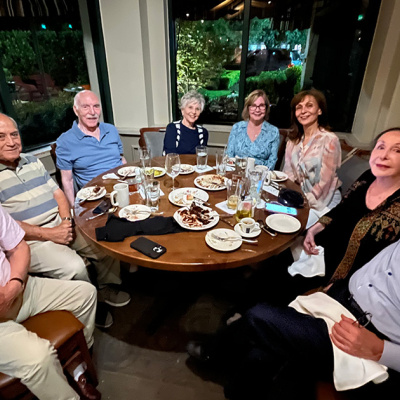Alumna Photojournalist Documents Peru’s LGBT Community with Debut Book, 'A Light Inside'

Since her last semester of college in the spring of 2013, Danielle Villasana, has spent every year traveling the world and using her photography skills to bring attention to women’s rights issues. In the last year alone, she documented the women and children of the Rohingya crisis, followed a Central American woman’s journey to seek asylum, and published her first work—A Light Inside—a bilingual photo book which follows a group of transgender women in Peru.
Released in September, the book is a culmination of five years of work and a successful Kickstarter campaign with more than 400 backers. It’s something Villasana, BJ ’13, says she never could have imagined when she started working on the photo series in 2013. She had previously worked on a few stories surrounding Latin America’s trans community, but when she arrived in Peru, she wanted to explore the topic further.
During Villasana’s time in Peru, Latin America accounted for nearly 80 percent of transgender homicides worldwide and, on average, most trans women in the region have a life expectancy of 35. Villasana wanted to humanize those statistics and help others understand the discrimination they faced. So she embedded herself in the trans community, befriending a group of women and documenting everything from their lives as sex workers to their health complications from HIV.
Now, she hopes that her book will double as a teaching tool in order to help activists and legislators in their fight for equality.
What first compelled you to cover the trans community?
I had a colleague take me to where a lot of these women work in downtown Lima. I happened to see one of the women getting arrested and it was crazy because it was like everything I had been reading online about the danger and the violence was happening right before my eyes. It was really jarring, but it gave me the conviction to say that this was a real issue that I should look into.
In your time documenting these women, what were you surprised to learn about their lives?
The first time I heard the statistic that the majority of trans women in Latin America don’t live past 35, I thought there was no way it could be true. But after spending almost four years documenting this community, I’ve seen with my own eyes that an early death is much more common than a long life for these women. Even now when I look at my work, every three or four photos I see someone who died. They’re rejected from their homes, their families, their schools. They suffer from not being accepted, they’re denied employment opportunities, so they end up as sex workers which makes them really vulnerable to domestic violence, police brutality, and health problems including HIV.
Did you ever find yourself at risk covering these women?
I was never arrested, but two times I was swept up and taken to jail with the trans women. Once, I was visiting them at one of their homes and there was a police raid of around 30 cops at their house. They were violent, verbally aggressive, kicking down doors and throwing things around. It was really overwhelming at the time, but the women would always protect me when I was out with them.
You dedicated the book to Tamara, one of the women you photographed during the project. Why was she special to you?
She was the first person I photographed for this project. I was really close with her; we called each other hermanas. From the time I met her, she would always say, “Why would I live past 30 if this is how society treats me?” I met her when she was 27 and she died two weeks after her 30th birthday. She meant so much to me, but I dedicated the book to her because I thought her story encompassed a lot of the challenges most of the trans women in Lima go through.
How did it feel to be selected as a finalist for the 2018 FotoEvidence book award?
I was so surprised. I never thought this work could be a book, but because my ultimate goal was to use these photos as a teaching tool, I started to think a book would be the best way. When I found out I was a finalist, FotoEvidence told me they could help provide publishing support if I raised the funds for the book, so I’m just extremely grateful for the 400-plus people who backed the book. The most moving thing was hearing from the people have told me how much they could feel these women through the photos and the text. Even though they’re not all on earth with us, I hope their stories help change people hearts and minds and teach them about the dangers of discrimination.






